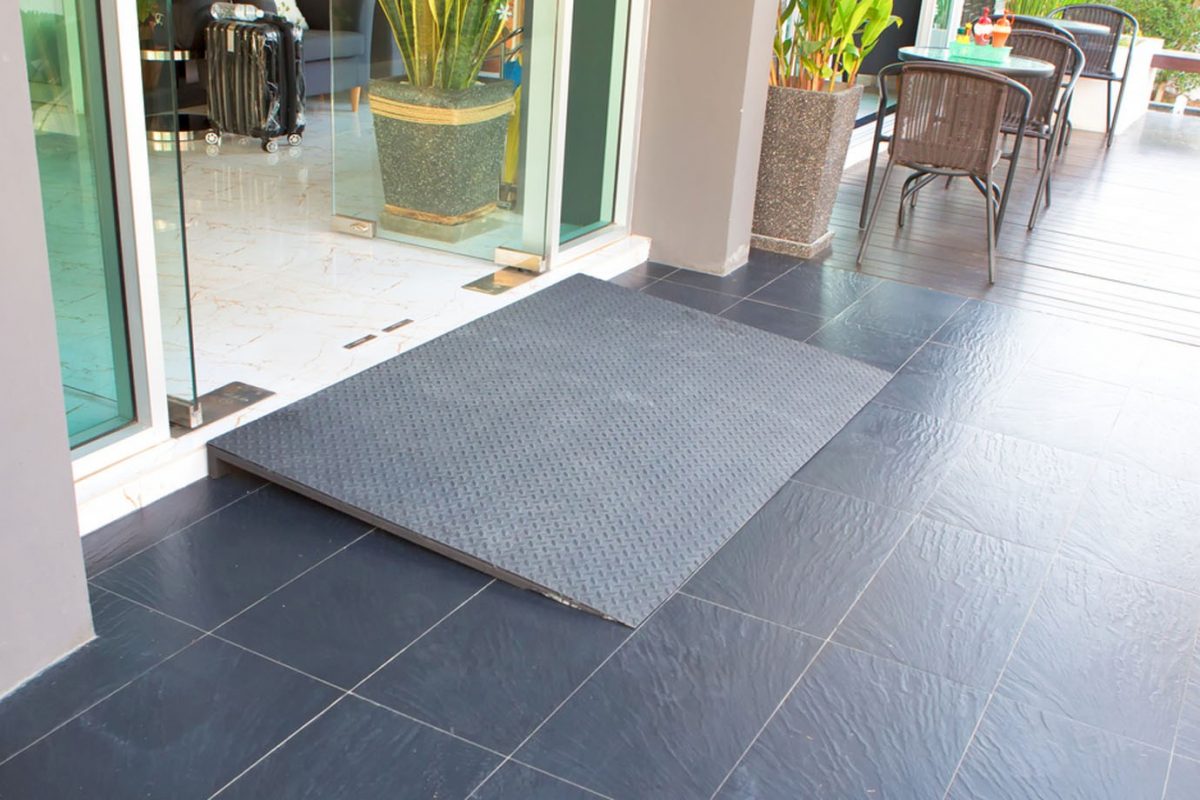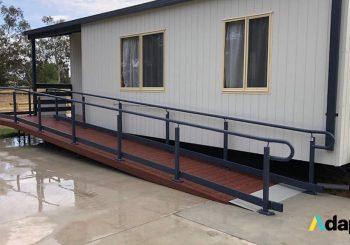Deciding to invest in a wheelchair ramp is the first stage towards living an independent lifestyle.
In addition to providing the opportunity to move in and out of your house whenever you feel like, these ramps are the most secure option for wheelchair users.
Most people don’t have much experience with wheelchair ramps. However, it’s crucial to understand the things you need to take into consideration before building a wheelchair ramp, such as:
There are people out there who might want to build a wheelchair ramp themselves, however with cost-cutting comes increased risk. Your best option is to hire a contractor who specializes in this field. In addition to the skills and experience they have in building ramps, they will also help you decide what the perfect choice for your home is. A ramp with a steep slope can be dangerous and it is essential that you hire a skilled and experienced professional for the job.
#2 The Length and Location
It is important to remember that not all homes are created equal, and there’s no one size fits all when it comes to ramps. Deciding the perfect location for your ramp is essential. Ask yourself questions like – Is there a side door that’s much more accessible? Or is it better to have a ramp leading up to the back door of your home? Hire a skilled professional for guidance in case you’re doubtful about what type of ramp will work for your house.
#3 The Degree of Incline
The incline of the ramp is probably the most critical aspect of a slope. Steep ramps are incredibly dangerous as they’re difficult to climb and pose the risk of tipping as well. The ramp will be much easier to use if the incline is low. Ideally, the ramp should have an inch of incline for twelve inches of length. In case you’re unable to climb the ramp, you will require constant assistance while entering and leaving your house. It is also crucial to ensure that the ramp slope starts than six inches off the ground surface.
#4 The Ramp’s Surface
Regardless of where the ramp is located, it needs to have a non-skid surface. The surfaces of all outdoor ramp structures should be built in such a way that water doesn’t accumulate on them. The possibility of water collecting on the landings should be kept in mind while designing and building the ramp as well.
#5 Load Specifications
Ramps are designed for all types of electric, manual, occupied, and unoccupied wheelchairs. Verify the weight specifications to ensure that the ramp is capable of handling your weight as well as the weight of your wheelchair.
Handrails are essential for public ramps; however, for private ramps, it’s entirely up to the user whether they need them or not. There are users out there who might find it challenging to climb up the ramp and require the assistance of handrails. In case they get tired, wheelchair users can hold onto these handrails for support. See to it that the bars don’t have splinters if they’re made of wood.
#7 Illumination Around the Ramp
Many people overlook adding light fixtures to their ramps. A wheelchair ramp adds independence and convenience to your life. However, without adequate lighting, maneuvering a wheelchair at night can be challenging. Install motion-sensor lighting or fixtures that can be turned and adjusted as required.
We offer a wide variety of ramp layouts and options and will help you with the design, planning, and the installation of your ramp. You can call 1800 232 782 or contact Adapta through this form, and one of our representatives will contact you shortly.





